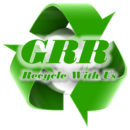What’s the problem with electrical and electronic waste?
Electrical and electronic waste is made up of a complex mix of different materials and components, some of which are toxic and/or hazardous. Before the WEEE regulations, over 90% of electrical and electronic waste was sent to landfill, incinerated or recovered without treatment, releasing many pollutants into the environment. WEEE is currently the fastest growing waste stream
What is the WEEE directives objective?
The Directive on waste electrical and electronic equipment (WEEE) aims to prevent the generation of electrical and electronic waste and to promote reuse,recycling and other forms of recovery in order to reduce the quality of such waste from land fill or incineration. It therefore requires the collection of WEEE, through recovery, reuse and recycling. Where possible, priority should be given to the reuse of the whole appliance
Do the WEEE regulations apply to my business?
The WEEE regulations apply to your business if you manufacture, sell or need to dispose of electrical equipment
What are the UK WEEE categories?
UK WEEE regulations apply to the following categories, the list is not extensive and basically if an item has a plug or a plugin adapter or runs on batteries it will almost certainly fall into one of the following categories. You don’t have to worry about which category your items fall into, Green Resource Recycling (GRR) Ltd assume full responsibility for your waste from the collection onwards
- Large household appliances (e.g. white good less cooling equipment)
- Small household appliances (e.g. vacuums, irons, toasters, etc)
- IT and Telecoms Equipment (e.g. computers, printers, calculators, phones, answer machines, etc. But not displays)
- Consumer equipment (e.g. radios, hi-fi equipment, electronic musical instruments, etc. But not televisions)
- Lighting Equipment (Not household lighting)
- Electrical and electronic tools (e.g. drills, saws, sewing machines, etc. excluding large stationary industrial tools)
- Toys, leisure and sports equipment (e.g. train sets, video games, coin slot machines, etc)
- Medical devices (e.g. dialysis machines, ventilators, etc) Note: this category is not covered by the RoHS Directive at present – see below)
- Monitoring and control instruments (e.g. smoke detectors, thermostats, etc)
- Automatic dispensers (e.g. ATM’s, vending machines, etc)
- Display equipment (e.g. Computer monitors, TV’s including LED, LCD, OLED, CRT and Plasma)
- Cooling equipment (e.g. refrigeration equipment)
- Gas discharge lamps
